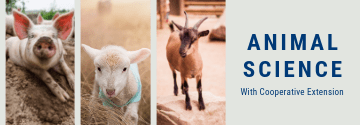Halloween has passed, and Thanksgiving is coming soon. If you wonder what to do with pumpkins as the seasons’ orange fades to Christmas green, cattle may be the answer.
A large quantity of pumpkins are available at salvage prices, and their high digestibility is appealing to many dairy farmers. Take special consideration to feeding logistics and nutrition.
Feeding logistics
Cattle should be able to break upon pumpkins after several free/thaw patterns, according to an Extension factsheet published by University of Nebraska-Lincoln. If pumpkins still remain too hard, lightly disking pumpkins in the field may help. One scenario could involve cattle grazing a field with cornstalk residual, supplemented by hay and pumpkins.
Additionally, Susan Kerr with Washington State University Cooperative Extension describes her experience making pumpkin silage, “pumpkage,” here. Her efforts to preserve the pumpkins for later use involved a “pumpkage” formulation with and without straw, and she ground the pumpkins with a wood chopper.
Nutrition
Pumpkins tend to have a moisture content between 83% and 88%, a crude protein content between 14% and 15% dry matter (DM), and a total digestible nutrients (TDN) of 60% to 70%, according to University of Nebraska-Lincoln Cooperative Extension.
Washington State University Cooperative Extension also cautions cattlemen to monitor trace mineral consumption when feeding large amounts of pumpkins, as pumpkins are high in phosphorus.
Remember, however, all pumpkins are not created equal. This nutrient content table published by University of Nebraska-Lincoln shows pie pumpkins tend to have higher DM, higher acid detergent fiber (ADF) and lower digestibility than carving pumpkins.
The Great Pumpkin
Pumpkins are a unique crop with special nutrition and feeding logistics. However, as many retailers are willing to sell large numbers of pumpkins salvage prices, it may be an opportunity you do not want to miss.


